Physical Address
304 North Cardinal St.
Dorchester Center, MA 02124
Common peroneal nerve block is useful in evaluating and managing distal lower extremity pain thought to be subserved by the common peroneal nerve. The technique also is useful for providing surgical anesthesia for the distal lower extremity when combined with tibial and saphenous nerve block or lumbar plexus block. It is used for this indication primarily in patients who would not tolerate the sympathetic changes induced by spinal or epidural anesthesia and who need distal lower extremity surgery, such as debridement or distal amputation.
Common peroneal nerve block with local anesthetic can be used as a diagnostic tool when performing differential neural blockade on an anatomic basis in the evaluation of lower extremity pain. If destruction of the common peroneal nerve is being considered, this technique is useful as a prognostic indicator of the degree of motor and sensory impairment that the patient may experience. Common peroneal nerve block with local anesthetic may be used to palliate acute pain emergencies, including distal lower extremity fractures and postoperative pain relief, when combined with the previously mentioned blocks while waiting for pharmacologic methods to become effective. Common peroneal nerve block with local anesthetic and steroid occasionally is used in the treatment of persistent distal lower extremity pain when the pain is thought to be secondary to inflammation or when entrapment of the common peroneal nerve as it passes through the popliteal fossa and then across the head of the fibula is suspected ( Fig. 172.1 ). Common peroneal nerve block with local anesthetic and steroid also is indicated in the palliation of pain and motor dysfunction associated with diabetic neuropathy. Destruction of the common peroneal nerve occasionally is used in the palliation of persistent lower extremity pain secondary to invasive tumor that is mediated by the common peroneal nerve and has not responded to more conservative measures. The lateral approach to common peroneal nerve block at the knee has the advantage of allowing the patient to undergo the neural blockade procedure in the supine or even the sitting position.
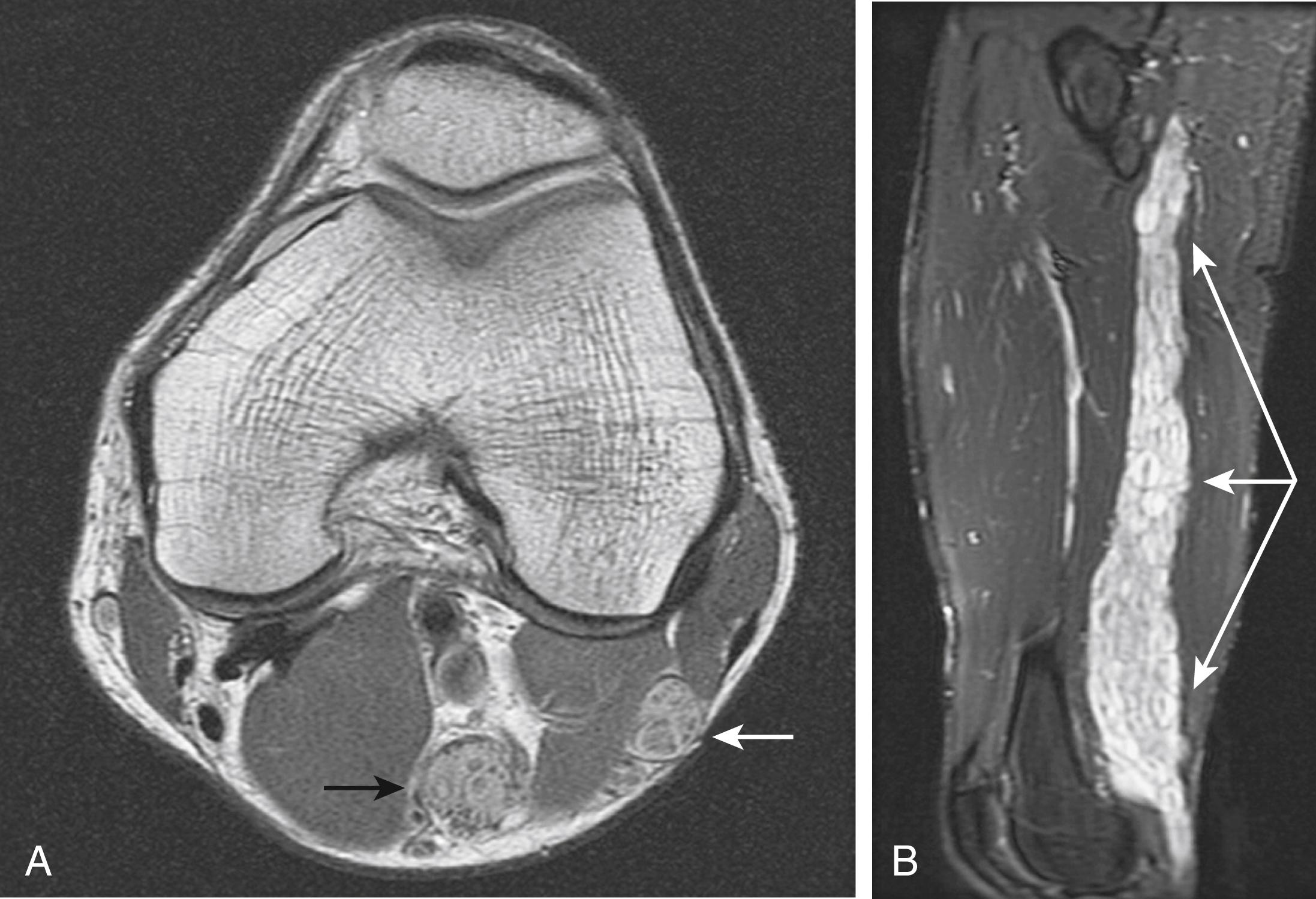
The common peroneal nerve is 1 of the 2 major continuations of the sciatic nerve, and the other is the tibial nerve. The common peroneal nerve provides sensory innervation to the inferior portion of the knee joint and the posterior and lateral skin of the upper calf ( Fig. 172.2 ). The common peroneal nerve is derived from the posterior branches of the L4, the L5, and the S1 and S2 nerve roots. The nerve splits from the sciatic nerve at the superior margin of the popliteal fossa and descends laterally behind the head of the fibula ( Fig. 172.3 ). The common peroneal nerve is subject to compression at this point by tumors, aneurysms, improperly applied casts and tourniquets, or prolonged crossing of the legs. The nerve also is subject to compression as it continues its lateral course, winding around the fibula through the fibular tunnel, which is made up of the posterior border of the tendinous insertion of the peroneus longus muscle and the fibula. Just distal to the fibular tunnel, the nerve divides into its 2 terminal branches: the superficial and the deep peroneal nerves and their branches ( Figs. 172.4 and 172.5 ). Each of these branches is subject to trauma and may be blocked individually as a diagnostic and therapeutic maneuver.
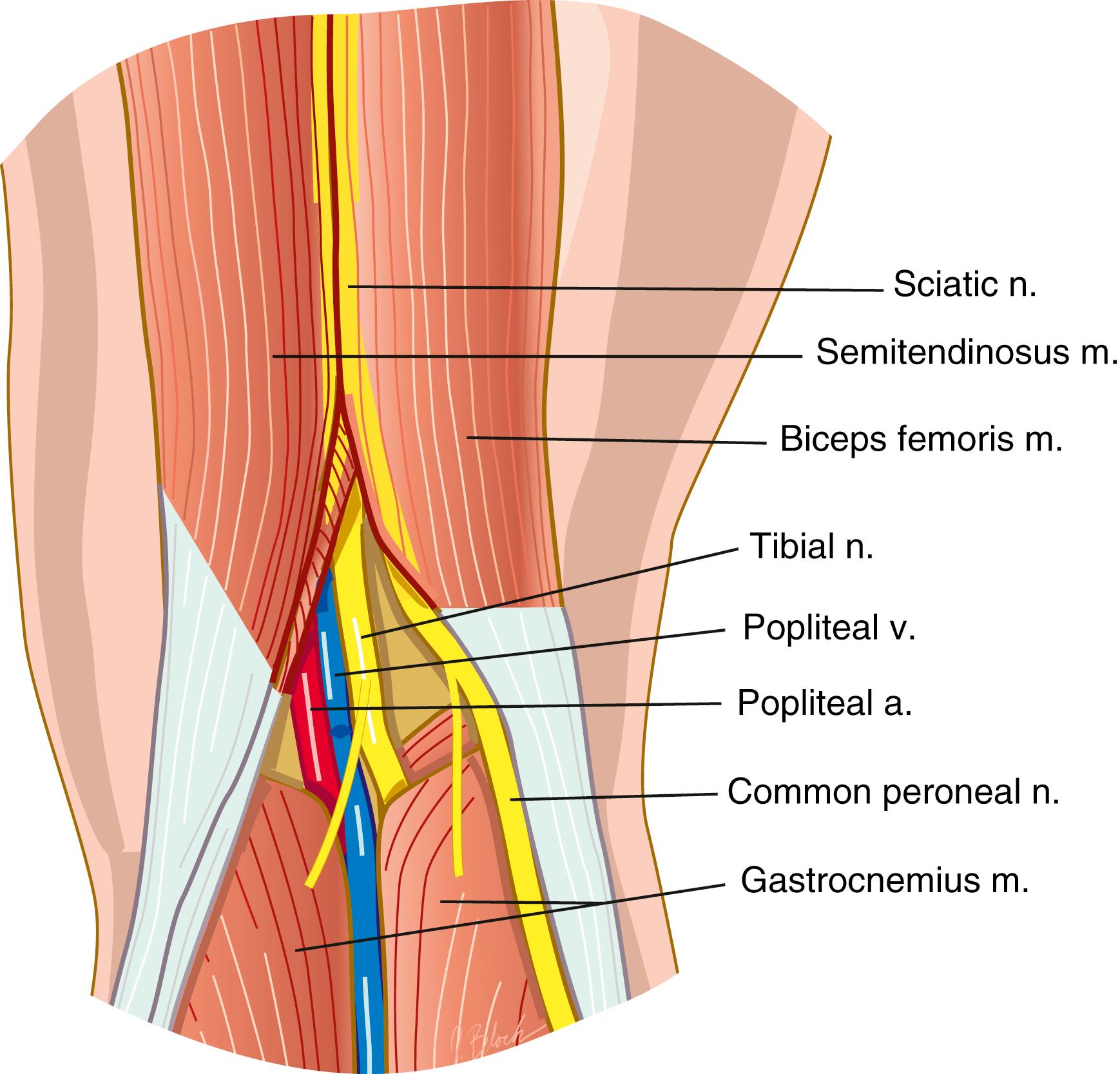
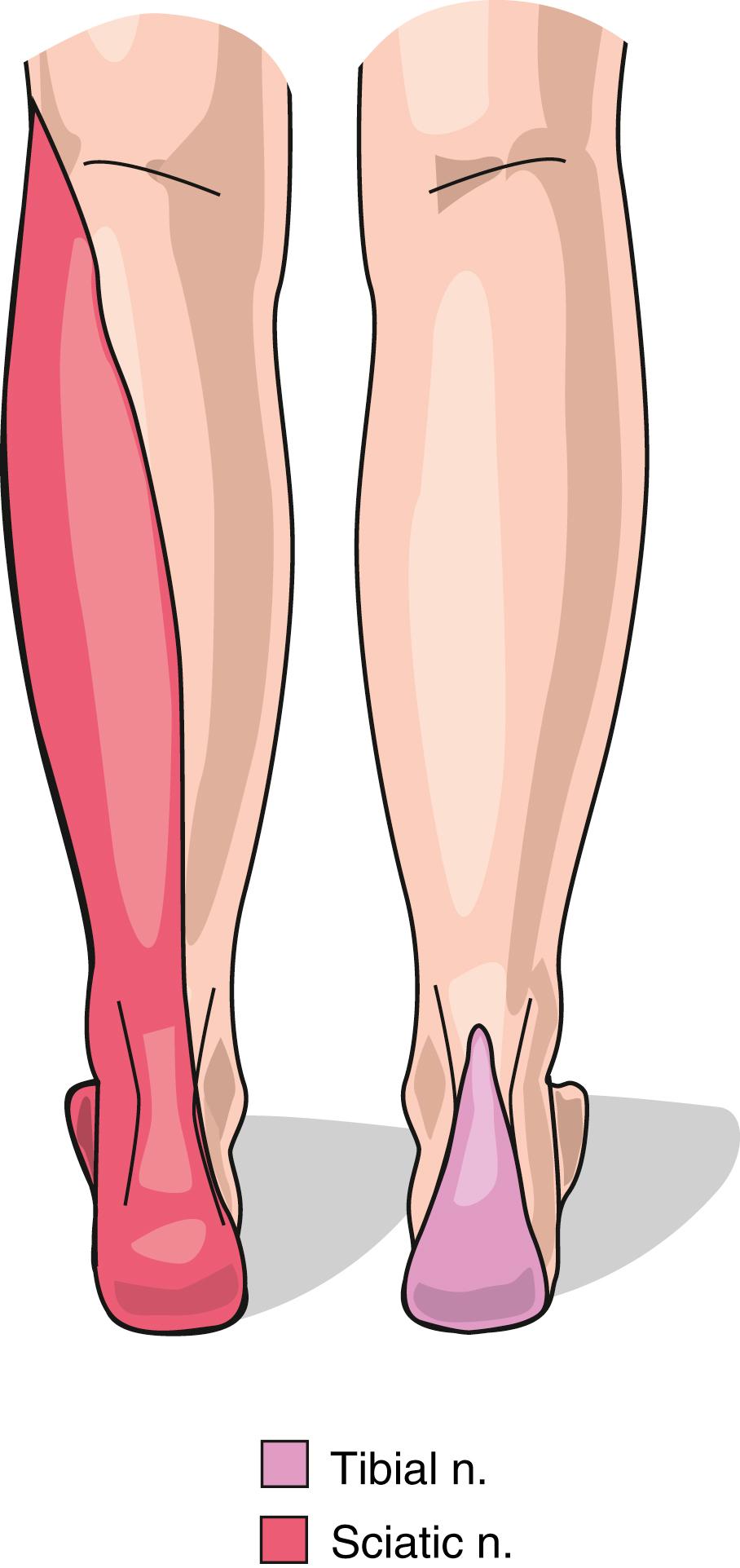
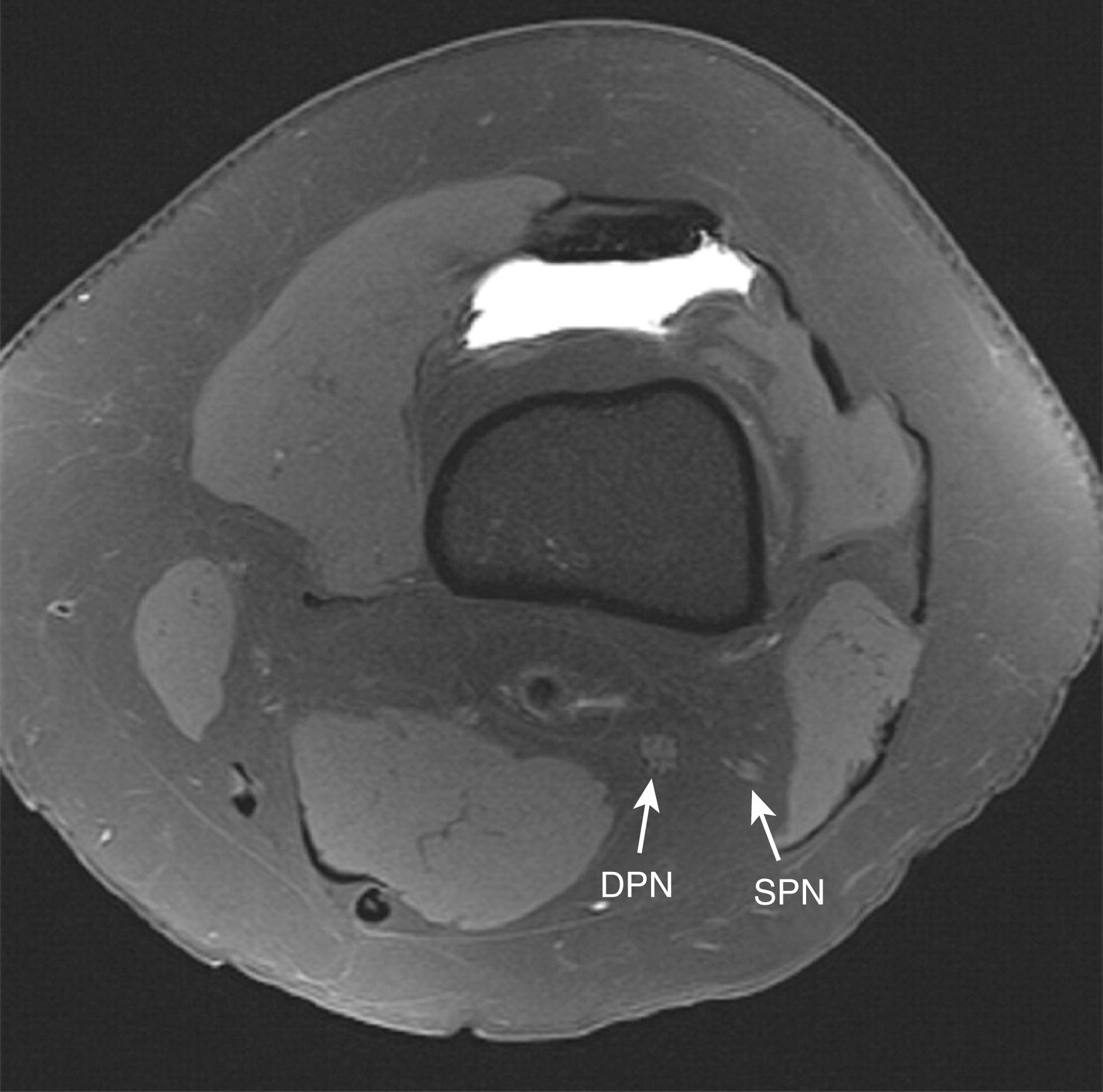
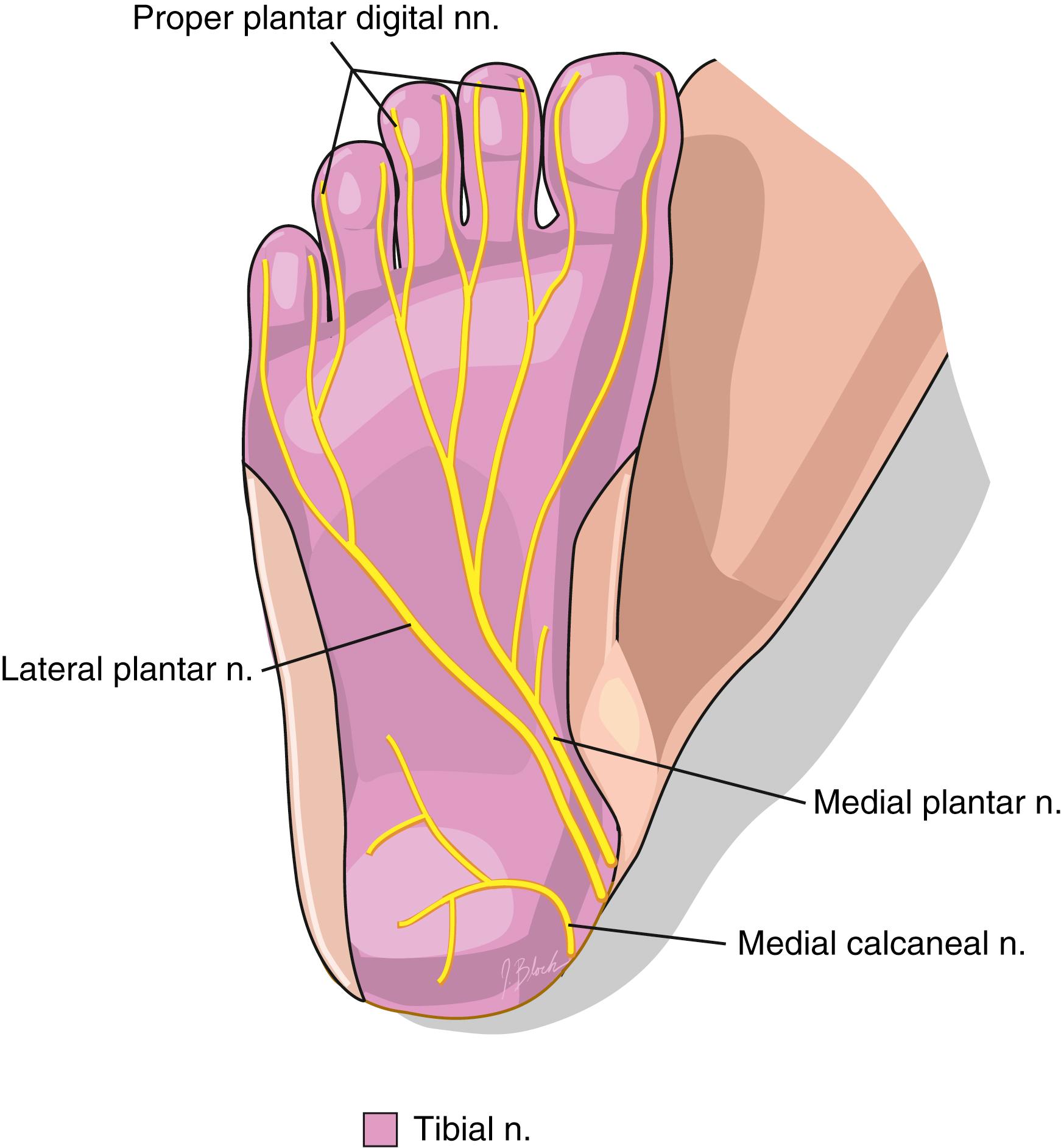
Become a Clinical Tree membership for Full access and enjoy Unlimited articles
If you are a member. Log in here